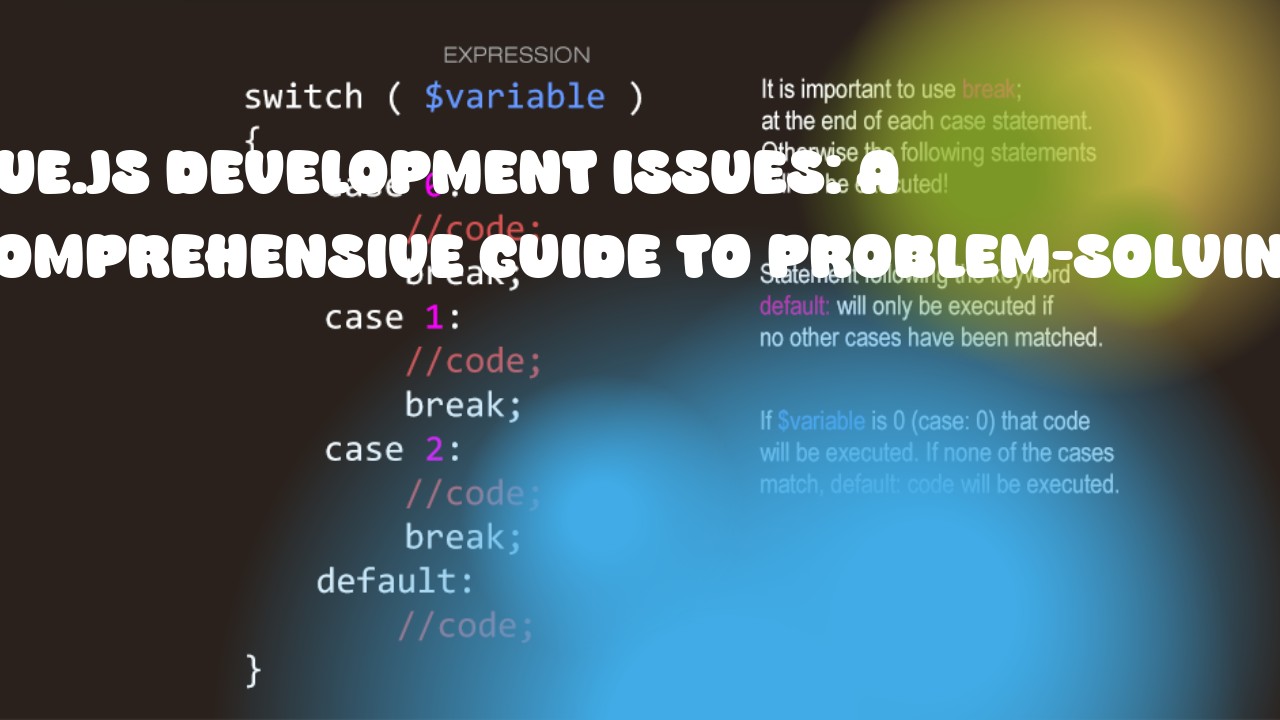Title: Vue.js Development Issues: A Comprehensive Guide to Problem-Solving
Introduction:
As a web developer using Vue.js for building dynamic and interactive web applications, it is essential to understand how to effectively resolve common development issues. In this comprehensive guide, we will explore various Vue.js development problems, their causes, solutions, and potential solutions. By following these best practices, you can ensure that your application runs smoothly and efficiently.
- Understanding the Problem: Vue.js is a powerful tool for building user interfaces, but it is also quite complex. Some of the common issues encountered during Vue.js development include:
a) Render issues: This refers to problems with rendering components in the browser. It can happen due to various factors such as incorrect component naming, template structure, or data binding errors. B) Lifecycle hooks not working as expected: this is a common issue when using Vue lifecycle hooks like created(), mounted(), updated(), and destroyed(). Sometimes, they might not be triggered as intended, leading to unexpected behavior in your application. C) Data synchronization problems: In some cases, data between components may not update correctly, causing issues with the user experience or functionality. D) Components not rendering properly: this is another common issue that can arise when dealing with Vue.js components. Sometimes, they might not render at all or be rendered incorrectly due to various factors such as template errors, CSS styles, or component logic.
- Exploring the Causes of the Issues: Understanding the causes of Vue.js development issues is crucial for finding effective solutions. Some of the common causes of these issues include:
A) Incorrect usage of Vue.js features: using Vue.js incorrectly, such as not utilizing its reactive system or using Vue lifecycle hooks improperly, can lead to unexpected behavior and performance issues. B) Lack of proper testing: testing your application thoroughly can help identify problems before they become bigger issues. However, some developers might choose to skip testing altogether, leading to hidden bugs that can be difficult to fix. C) Poor code organization: organizing your code properly, including separating concerns into different components and using Vue Router for routing, can help avoid common development issues. D) Inexperience with JavaScript ES6+: as a web developer, understanding JavaScript ES6+ features like arrow functions, template literals, destructuring, etc., can be crucial for building robust and efficient applications.
- Solutions to the Vue.js Development Issues: Here are some effective solutions to the common Vue.js development issues:
A) Using Vuex for State Management: Vuex is a popular state management library that can help you manage complex application state in a more organized and maintainable way. By using Vuex, you can ensure that data between components is synchronized properly. B) Utilizing Vue Lifecycle Hooks Properly: Understanding Vue lifecycle hooks properly can help you avoid common issues with unexpected behavior or performance issues. You should use them correctly and listen to the events they trigger to ensure that your application runs smoothly. C) Using Props Correctly: Props are a crucial aspect of Vue.js component development. They allow you to pass data from one component to another, which can help manage your application state and improve its maintainability. D) Testing Your Application Thoroughly: Writing tests for your application can help identify problems before they become bigger issues. It can also ensure that your application is performant and reliable.
- Conclusion: Vue.js development requires careful planning, testing, and attention to detail. By understanding the common issues faced during Vue.js development and utilizing effective solutions, you can build robust and efficient applications that provide a great user experience. Remember that continuous learning is key to keeping up with the evolving web development landscape.

